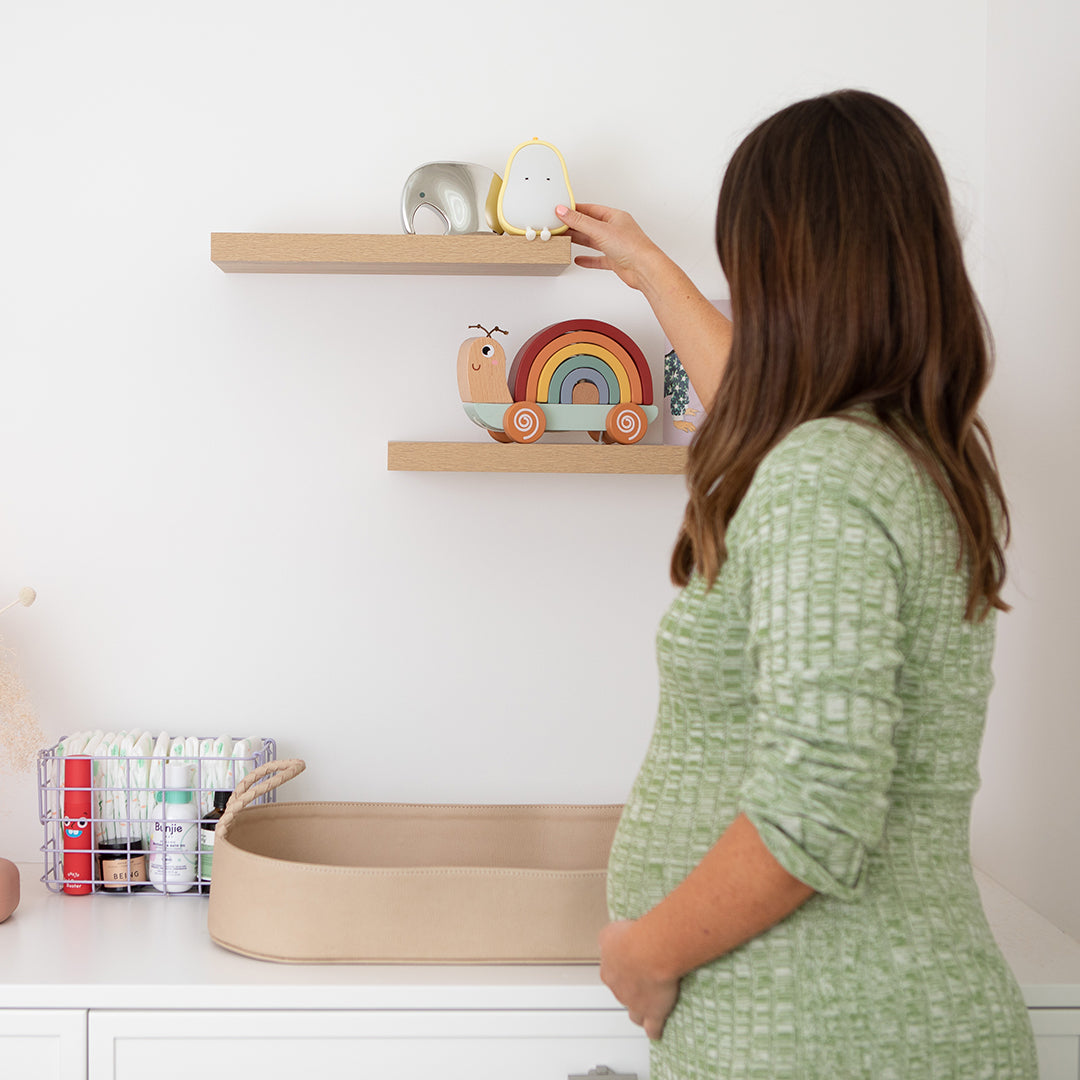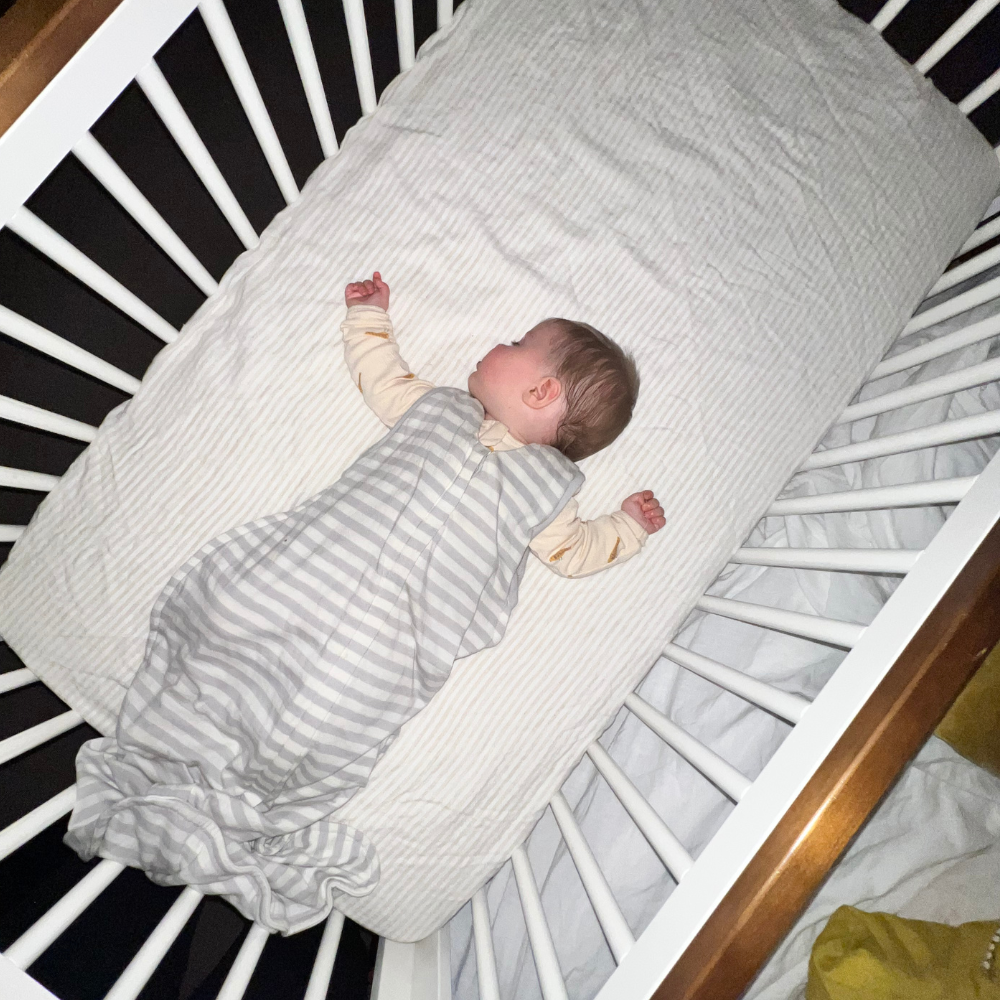Light and bright rooms are beautiful, but not great for a newborn. Darkness aids sleep, and your little one will need naps while the sun is out well into their third year, and beyond. You’ll need window coverings, but even making sure the cot is away from the window and in the darkest part of the room is smart. When it does come to choosing window coverings, a few early wakes might inspire you to inquire about industrial blockout security shutters, but a cheaper, less permanent option is blackout blinds. Complete darkness, and you can still add nice blinds and/or curtains for aesthetic purposes.


Cute and functional. They can co-exist.
All parents approach nesting (a somewhat patronising term for prepping your home for a tiny new housemate) in different ways. For some, “cute” is the main criteria - you’ve had that Pinterest board perfected for years, now’s the time to execute, you’ve earned it. For others it’s about space. Many a baby’s room is also the home office. They don’t mind at all. For lots, it’s about buying less, buying smart. Amen. A key part of this is thinking about the flow of the room, what you need to-hand, what can go away, where you need light, where you don’t and what serves a practical purpose. We know, not the fun stuff, but when newborn days feel like four days in one, it makes a world of difference. We’ve done the trial and error (and rearranged the furniture five times), to give you seven very practical tips for setting up your baby space, be it big, small, permanent or next to the desk.
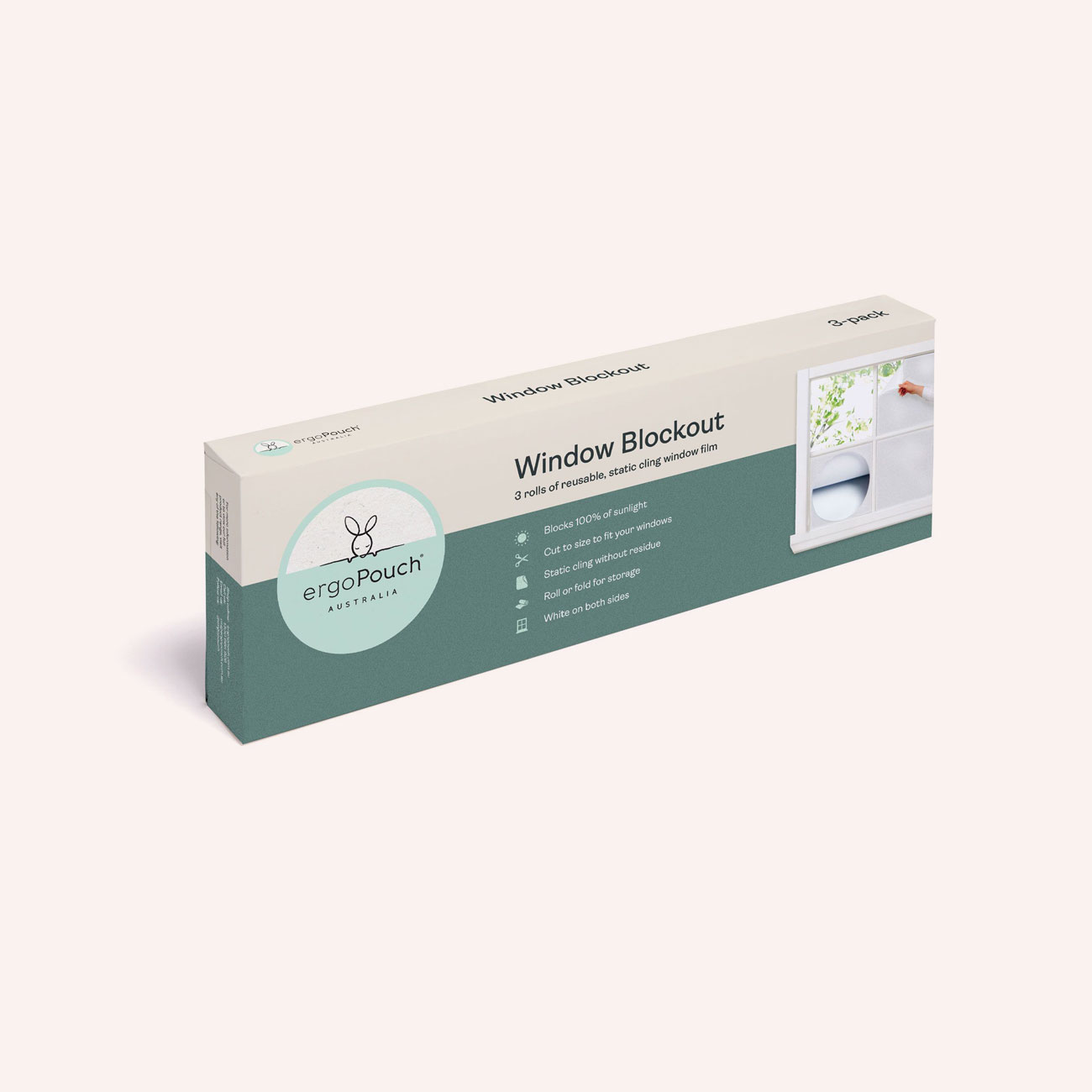
2. Add a Comfy Chair
It might be the baby’s room, but the adults are going to use it, alot, and a comfy armchair is essential. You’ll use it for settling, feeding, even sleeping yourself. And as the need for feeding and settling disappear, it will be where you cuddle together and read bedtime stories, or find your kid sitting and chatting to their dolls. For your chair, you want a durable fabric, arms, for it to be more upright than reclined (so it’s easy to get out of in those first days postpartum) and positions with a little side table next to it to use as a little feeding station.

3. Do Night Light
You can use a lamp, but night lights have legs as an investment and real benefits for being there from the start. Firstly, they are usually all dimmable, meaning you can have the perfect amount of light to see but not startle when you’re settling your baby, feeding or just popping in to check they’re OK. When they outgrow the cot and move into a big bed, a night light allows them to see if they get out of bed (and they will) and avoid accidents. Lots of children also love the comfort of a night light and use them for years. Finally, night lights make for super cute decor, which is great for when space is tight! Function and fashion. Amazing.
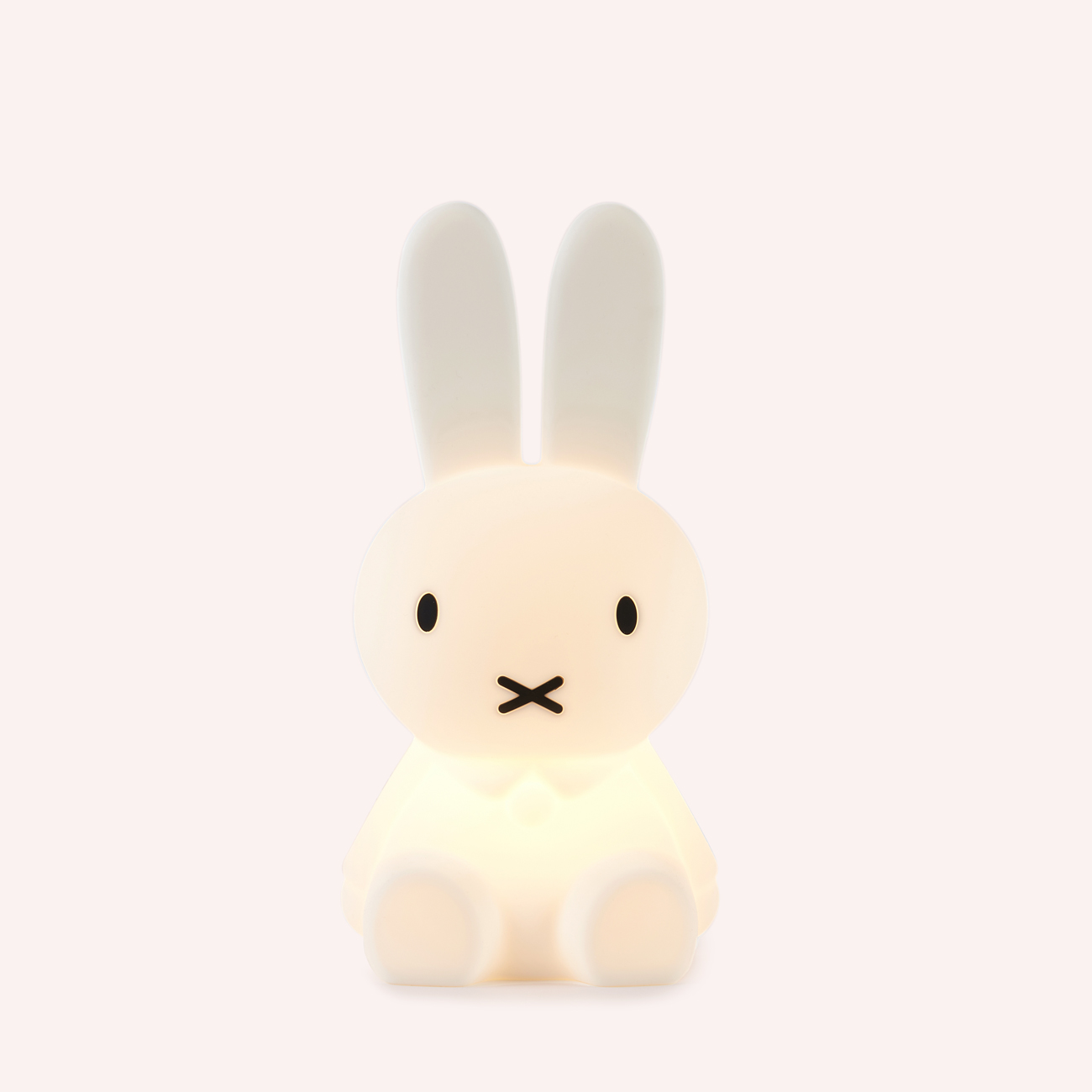
4. A Functional Change Space
You’re going to be doing a lot of nappy changing, so set yourself up right. This doesn’t mean you need an official change table (however if you want one, there’s only one we recommend), but you do need a strong, flat surface that’s at a comfortable height (to not freak out your back) and has other space nearby to hold nappies, wipes and outfit changes. This is super important because once your baby is on the change mat, you can’t step away, not even just to the other side of the room, incase they roll. A chest of drawers is a great option (that will have continued use), or if you’re working on a former desk, the Bunnie Caddie will hold everything you need, and look chic doing it.
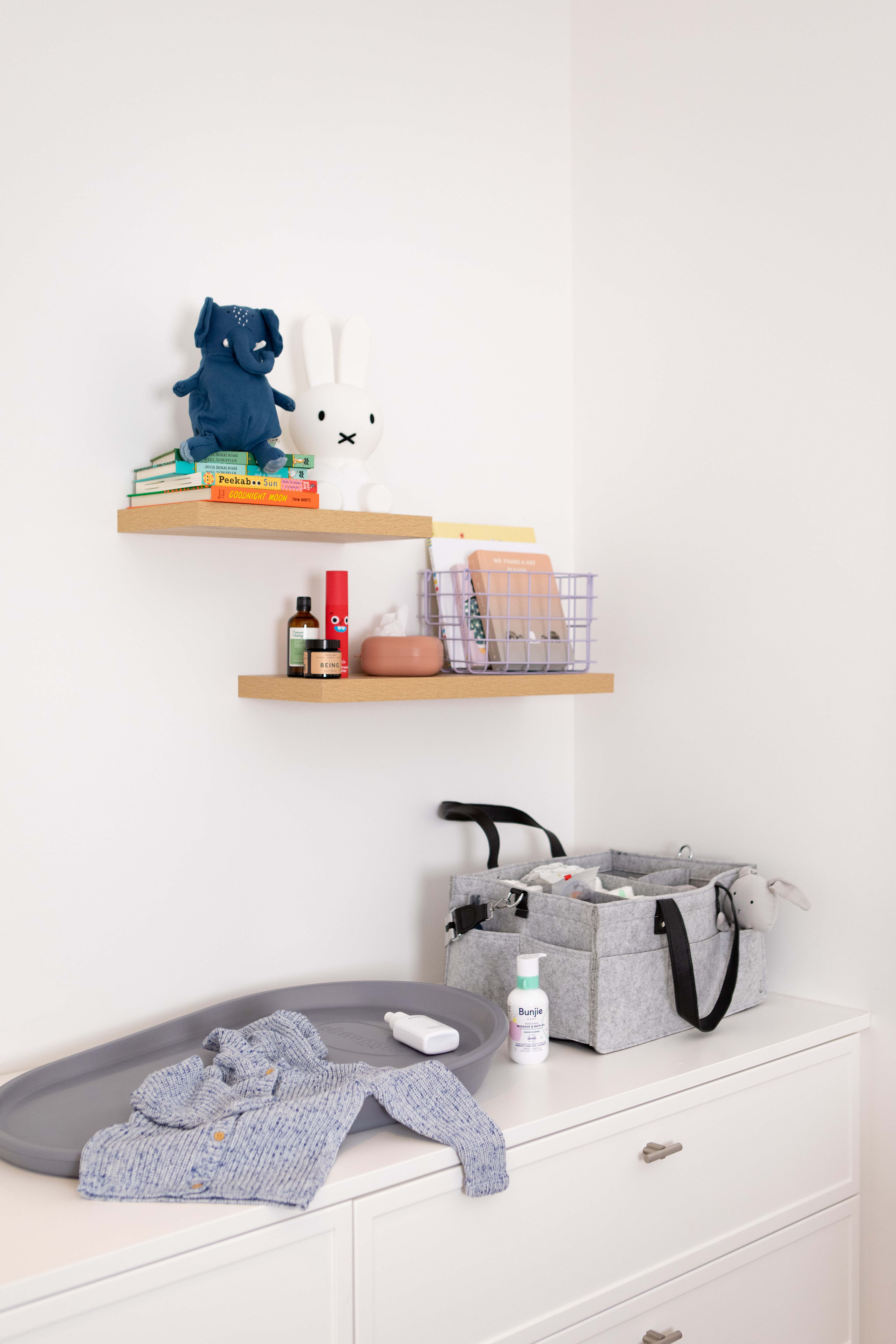
5. Pieces With Longevity
If there’s one thing that’s true, it’s that babies grow fast. Thinking about the purpose of what you buy beyond the first few months will help you shop smart. And it doesn’t have to be that everything you use has to transform into something else, the plan may be that you’ll be using it for more children down the track, your own, or someone else’s. You might donate or resell the item. Your nursery armchair might join your living room furniture. Or it might be a cot that becomes a bed that becomes a desk. It will come down to your lifestyle, space and preference. Just keep longevity in mind while you shop. It will serve you well.
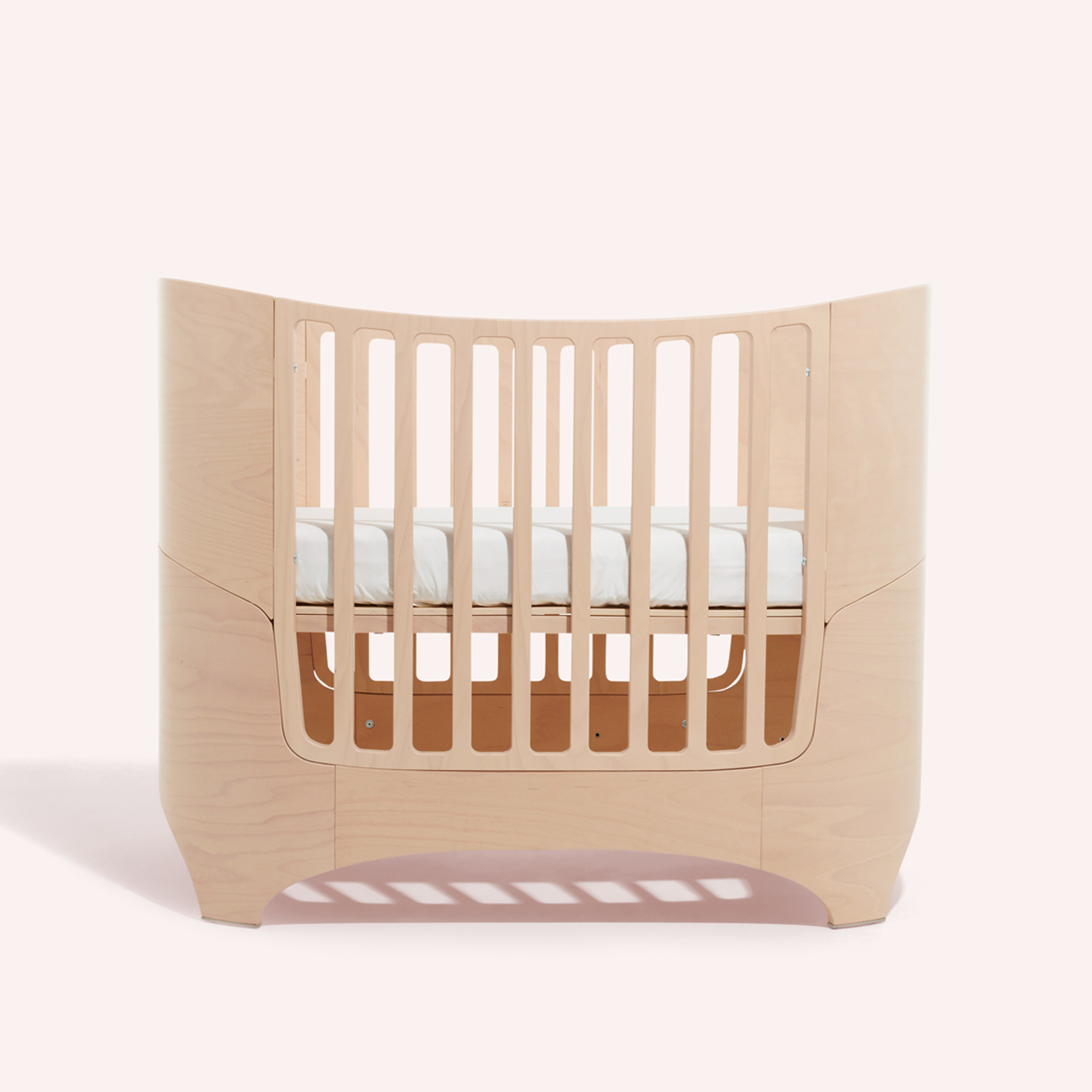
6. Display Away!
Function is important, but you want your little one’s space to feel special, and not like the spare room, so include some space, be it on top of the drawers, the window ledge or an added shelf, to display some of your little one’s beautiful things. Blocks, books, new friends, they really make the space feel warm and exciting.
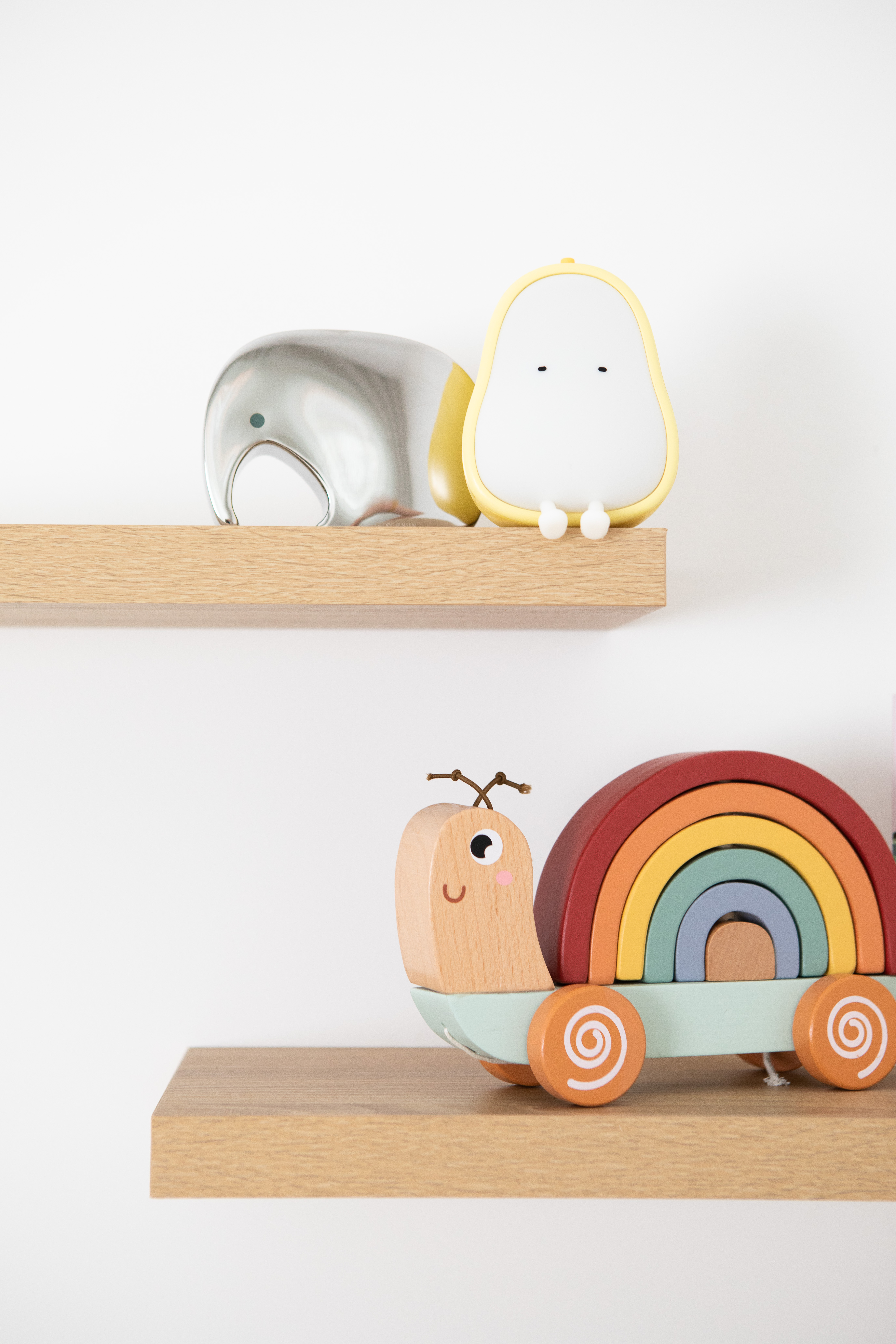
7. Versatile artwork
A lot of nursery decor advice comes with paint colours. Awesome if you’re in a home you own and plan to use the room as a nursery for years to come, but we know that often isn’t the case. Babies often come with renovations, rentals and relocations, so rather than the permanency of wallpaper or paint, use prints, paintings and rugs to add character and colour to your walls and floors. If function is your m.o. you can also use picture books as wall art.







































































































